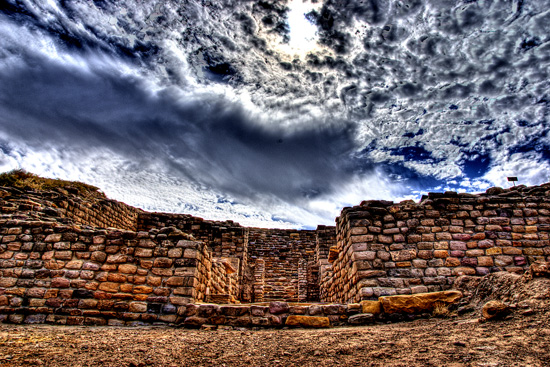
Life went on as usual in an early morning in March at Rakhigarhi where history lies buried. Men sat in groups on cots, smoking hookahs, outside their homes in the rural hinterland of Haryana. Women carried cattle dung on their heads to turn them into dry circular cakes to be used as cooking fuel. Hundreds of buffaloes roamed the lanes and alleys. The smell of dung was thick in the air.
We set out to Rakhigarhi around 6-30 a.m. on March 8 from the farmhouse we had been staying in, with Professor Vasant Shinde leading the way. In our group were Professor G.B. Deglurkar and his family members. Shinde is the Vice-Chancellor of Deccan College Postgraduate and Research Institute, a deemed university in Pune. Deglurkar, a noted historian, is its president. It was a trip worth remembering.
On a big mound we had climbed, dung cakes were arranged like pyramids or domes to a height of about five feet. The villagers have encroached on this and other nearby mounds in the location which the Archaeological Survey of India (ASI) has fenced off as a “protected” area. We were told that a dargah sprang up on a mound some years ago. On top of another stood a concrete shed for buffaloes.
Open fields of fully grown wheat and mustard crop stretched as far as the eye could see on both sides of the road. “All this is high-quality, high-yield wheat because this is the catchment area of the river Drishadwati, or the Chautang,” said Shinde. “The groundwater level is high, just 10 or 15 feet below the surface. This area is, therefore, ideal for large-scale cultivation. The fertile nature of this region is the reason for the existence of the biggest Harappan site at Rakhigarhi,” said Shinde, a specialist in the Harappan civilisation.
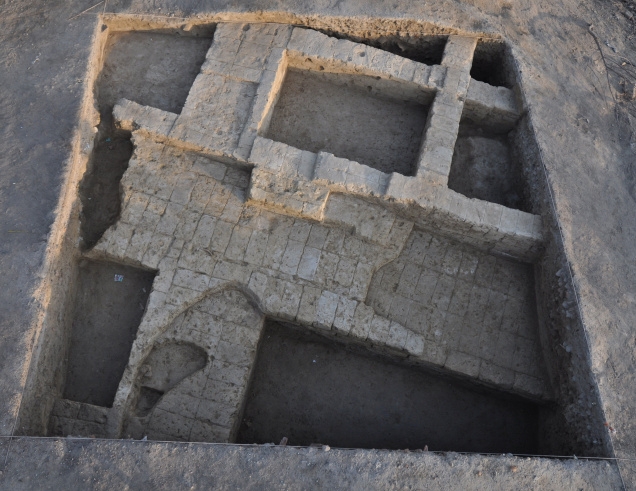
With the recent discovery of the two mounds in addition to the seven discovered earlier (designated RGR-1 to RGR-7) in Rakhigarhi, it now has emerged as a competitor to Mohenjo-daro as the biggest Harappan civilisation site out of an estimated 2,000 Harappan sites in India, Pakistan and Afghanistan. Until now, Mohenjo-daro, Harappa, Ganeriwala (all in Pakistan), Rakhigarhi and Dholavira (both in India) were ranked as the five major Harappan sites in that order.
A team of teachers and students of the Department of Archaeology, Deccan College, made the “important discovery”, as Shinde put it, in January 2014. The eighth and ninth mounds are about 25 hectares each. They are located to the east and west of the main site. “With the discovery of the two additional mounds, the total area of the Rakhigarhi site will be around 350 hectares,” said Shinde. The archaeological remains at Mohenjo-daro extend over 300 hectares.
“The two new mounds show that the Rakhigarhi site was quite extensive. They have the same material as the main site. So they are part of the main site,” said Shinde. On the surface of mound nine, burnt clay clots and circular furnaces were found, indicating that this might have been the industrial area of the Harappan site of Rakhigarhi.
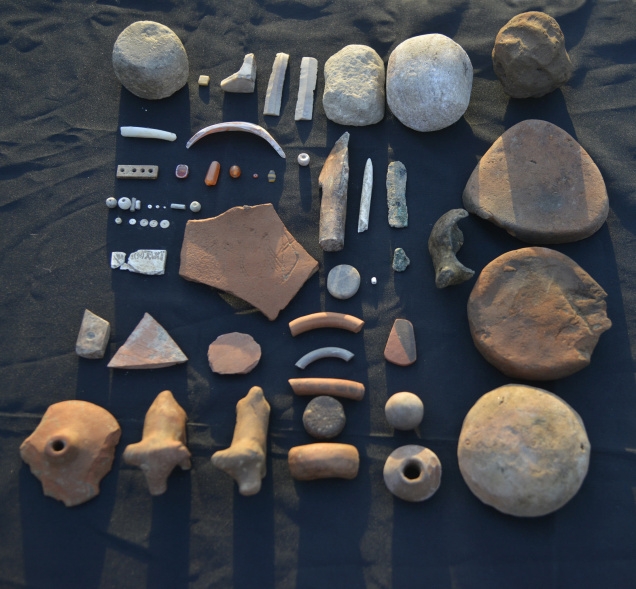
Harappan civilisation
The growth and development of the Harappan civilisation can be divided into three phases: early Harappan (3000-2600 B.C.), mature Harappan (2600-1900 B.C.) and late Harappan (1900-1500 B.C.). Much of the Harappan site lies buried under the present-day Rakhigarhi village situated about 25 km from Jind town in Hisar district. It actually comprises two villages—Rakhi Khas and Rakhi Shapur.
Acharya Bhagwan Dev of Jhajjar town was the first person to notice the Harappan remains at the site, in the early 1960s. Not knowing what they were, he informed Professor Suraj Bhan, who was Professor of Archaeology, Department of Ancient History, Culture and Archaeology, Kurukshetra University, Haryana, about it. Bhan confirmed the site’s Harappan character.
Amarendra Nath, former Director, ASI, was the first archaeologist to excavate Rakhigarhi. He wrote extensively about the findings of his excavations in Indian Archaeology: A Review, the annual publication of the ASI, in 1998, 1999 and 2000. The cornucopia of Harappan artefacts found during the three fields of excavation includes seals in square, rectangular and circular shapes; bangles; fish hooks and arrowheads made of bronze; potter’s kilns; the remains of a drainage system; and terracotta figurines of a mother goddess, males, animals, including humped bulls, and goats and sheep.
“We have been able to extensively identify the purpose behind the early Harappan structures and trace the beginning of the emergence of town planning in early Harappan levels, wherein the structures are well laid out and there is evidence of a public drainage system,” said Amarendra Nath. Although other sites had yielded potsherds with graffiti marks, “here we have graffiti arranged in a sequence, which suggests the beginning of writing in the early Harappan level”, he said (“Harappan link”, Frontline, February 1, 2008). Amarendra Nath said the discovery of a needle suggested that some kind of stitched cloth was used. Importantly, a potsherd with a painting on it was also found. “This is a rare painting in the Harappan context, wherein you get the evidence of a person wearing a dhoti and a stitched upper garment,” he said. (According to Vijai Vardhan, who wrote “Rakhigarhi Rediscovered”, published by the Department of Archaeology Museums, Government of Haryana, evidence of textile working was found at Rakhigarhi.)
In the early 1970s, Professor R.S. Bisht was the Superintending Archaeologist of ASI’s Srinagar Circle, which had jurisdiction over Haryana, Himachal Pradesh and Punjab. “I used to visit Rakhigarhi frequently. I found a few mounds there. I got the site mapped and got it approved as a protected site. In addition to that, I identified two separate mounds, which are older than the Harappan civilisation. They are locally called Arada mounds. They lie to the west of the Harappan mounds,” said Bisht, who made a name for himself with the excavation of Dholavira, a Harappan site in Gujarat, from 1990 to 2005.
Such early phases of the Harappan culture were found at Kalibangan in Rajasthan and Banawali in Haryana. “We call them Sothi culture. These two mounds belong to the Sothi culture,” said Bisht. The ASI excavated Rakhigarhi between 1997 and 2000.
Teachers and students of the Department of Archaeology, Deccan College, and Maharshi Dayanand University, Rohtak, Haryana, resumed the excavation of RGR-4 from January 10 this year under Shinde’s leadership. They dug five trenches.
“We wanted to find out the total area of the site because there was a controversy about the area. So we did an extensive survey last year and this year. We came across two additional mounds in January this year,” said Shinde, on the discovery of mounds eight and nine. “After that, we undertook a scientific scanning of the site with a ground-penetrating radar [GPR]. The GPR helped us in understanding the nature of the remains of the site.”
Sampling was done to get an idea of the human activities on the site—what the living areas were, where manufacturing was done, and so on. It was found that RGR-2 had large remains of crafts manufacturing.
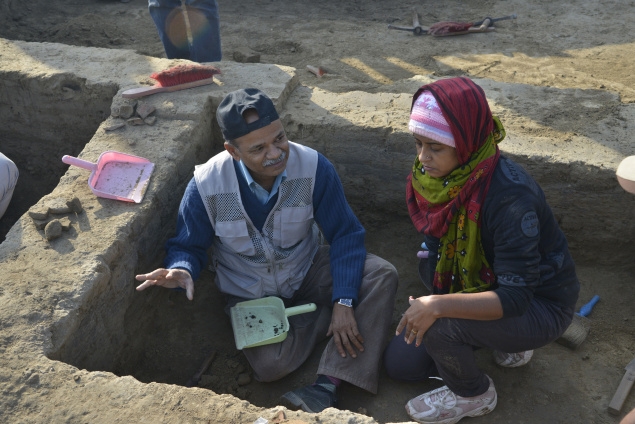
Structural phases
Then began the excavation from January 10 of RGR-4 in an area where the early Harappan phase began and it ended with the mature Harappan phase, Shinde said. “In four metres [of depth] so far, we have found evidence of only the mature Harappan phase. We have found five different structural phases,” he added.
When we visited the excavation site on March 7 and 8, there was a flurry of activity led by Nilesh P. Jadhav, Research Assistant, and Kanti Pawar, Assistant Professor, both belonging to the Department of Archaeology, Deccan College. Research Assistants Pranjali Waghmere, Amit Pendam, Avradeep Munshi, Sutapa Lahiri and Diya Mukherjee were assiduously working in the trenches. They had unearthed a seal which had the Harappan script but no animal motifs, a potsherd inscribed with the Harappan script, terracotta cakes, beads and bangles made of terracotta, and an assortment of painted potsherds. Other artefacts unearthed included terracotta figurines of pigs and dogs, toy cartwheels, fishnet sinkers, sling balls to scare away birds, tiny beads made of steatite, agate and carnelian, etched carnelian beads, micro weights, banded agate weights, pieces of perforated jars and painted pottery.
RGR-4 housed a Harappan residential complex built of mud bricks. There was evidence of a hearth, a bathroom, drainage and a room, Jadhav said.
The bathroom or the washing place had a platform and a soak jar. Nearby was a drainage system, the construction of which could be traced to two different periods. The bricks at the lower level belonged to an earlier period than the ones used for drainage, Pawar said.
The excavating team also found terracotta cakes in square, rectangular, circular, triangular, and “idli” (disc) shapes. “They were used as tiles for decoration or for heating purposes. Some of the cakes have graffiti on them, but we did not find any such here,” said Pranjali Waghmere, who had just dug up a circular cake.
The potsherds unearthed were engraved in wavy, horizontal and concentric lines, fishnet designs, peepal leaf images and hand motifs. Some of them were bichrome. “The sheer variety of pottery, with aesthetic designs, shows the prosperity that the Harappan people enjoyed. This pottery is a classic example of the mature Harappan period,” Jadhav said.
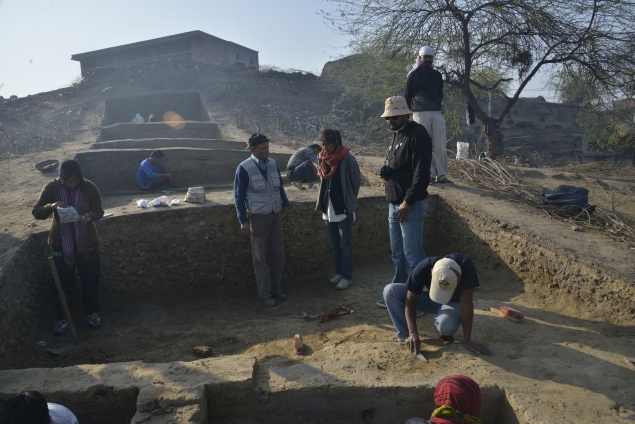
Mud-brick granary
One of the trenches had the remains of a “beautifully made” mud-brick granary, which “is still in remarkably good condition”, said Shinde. The granary’s floor was made of rammed earth and plastered with mud. It had rectangular and square chambers. Traces of lime and decomposed grass were found daubed on the lower portion of the granary walls. Seven chambers were found in the granary. “It appears to be a big structure. We do not know whether it is a private or public granary. Considering that it extends on all sides, it could be a big public granary,” he explained.
Shinde called the presence of lime and decomposed grass “a significant indication that it is a storehouse for storing grains because the lime acts as an insecticide and grass prevents moisture from entering the grains”. This was “strong proof for understanding the function of the structure”, he said.
This is the second time that a granary has been found in Rakhigarhi. In RGR-2, too, Amarendra Nath had unravelled a granary with a guard’s room. “We found grains in the granary. We exposed the entire structure of the granary,” he said. The booklet “Rakhigarhi Rediscovered” says that the “modest granary” consisted of “cells in two segments with a corridor in front and a guard’s cell” and that “the accumulated dust and earth from these cells yielded barley”.
Shinde said Rakhigarhi was “an ideal site to believe that the beginning of the Harappan civilisation could have taken place here”. A significant problem relating to the Harappan culture is about its genesis. It was earlier thought that the origin of the early Harappan phase was in Sind (now in Pakistan).
In the past 10 years, many Harappan sites have been discovered in Haryana. “About half a dozen of them, including Bhirrana, Mitathal, Girawad and Farmana, are early Harappan sites dating back to circa 5000 B.C.,” claimed Shinde. Carbon-14 dating of charcoal found in these sites indicates that the beginning of the Harappan civilisation was earlier in this region than what was believed so far, he said.
He, however, stressed the need for further confirmation on this. “We have not excavated at the lower level” at Rakhigarhi this year, he said. “We do not want to rush to any conclusion unless we have sufficient data. We hope we will get the data here. If we get that confirmation, it will be interesting because the origin of the Harappan civilisation would have taken place here and it would have slowly moved to the Indus valley.”
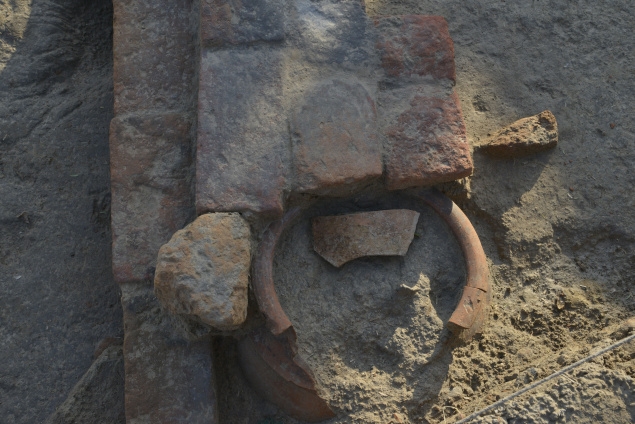
Heritage endangered
The Global Heritage Fund (GHF), in its report released in May 2012, identified Rakhigarhi as one of the 10 most endangered archaeological and heritage sites in Asia. The GHF is a non-profit organisation that helps to sustain and preserve heritage sites in developing countries and regions around the world. It said the Rakhigarhi site, “one of the oldest and largest” Harappan sites in the world, faced threats from development pressures, insufficient management and looting.
According to the Ancient Monuments and Archaeological Sites and Remains Act, 1958, which was amended in 2010, a prohibited area extends to 100 metres in all directions around a protected area/monument. The regulated area runs to a distance of 200 m in all directions, beginning at the limit of the prohibited area. While any construction activity is banned within the prohibited area of the first 100 m, construction can be done with the ASI’s permission in the regulated area in the next 200 m.
However, be it the prohibited area or the regulated area, the Harappan site at Rakhigarhi is being encroached upon on all sides. Rakhigarhi has hundreds of houses built on the remains of the ancient civilisation, making it difficult to excavate the site completely. Besides, the villagers use the fenced-off mounds for various purposes.
Much of the two pre-Harappan mounds, which are called Harada mounds, have been levelled for agriculture. A burial site belonging to the Harappan period has also made way for the cultivation of wheat.
Painting a picture of contrast with the artefacts was a mechanised ploughshare (some feet away from the symbolic burial) in a field the size of a football ground. The landowner had used it to dig up the field to get mud to make bricks. In the process, hundreds of ritual pottery and skeletal remains were destroyed, erasing evidence of an ancient civilisation.
But the owner of the field had allowed the Deccan College team to excavate a Harappan grave there. The researchers said it was an aesthetically laid-out symbolic burial of the Harappan period. The four sides of the grave, on the surface, were lined with bricks.
Shinde is confident that the site can be saved by educating the people of Rakhigarhi on its importance. “We have realised that unless there is participation from the people, we cannot save it. So we want to ensure the involvement of the people,” he said.
To ensure community development in Rakhigarhi, representatives of the Deccan College and the Indian Trust for Rural Heritage and Development (ITRHD) had already held meetings, the Vice-Chancellor said. In Shinde’s estimate, Rakhigarhi has the potential to be a good tourist spot. It is just 160 km from New Delhi.
The Haryana government, the ASI and the Deccan College together were planning to set up a site museum at Rakhigarhi, he said. The Haryana government had earlier allotted land for the museum construction, but it was located away from Rakhigarhi.
“We surveyed the village and found a lot of abandoned havelis. “We want to convert these havelis into museums,” Shinde said.
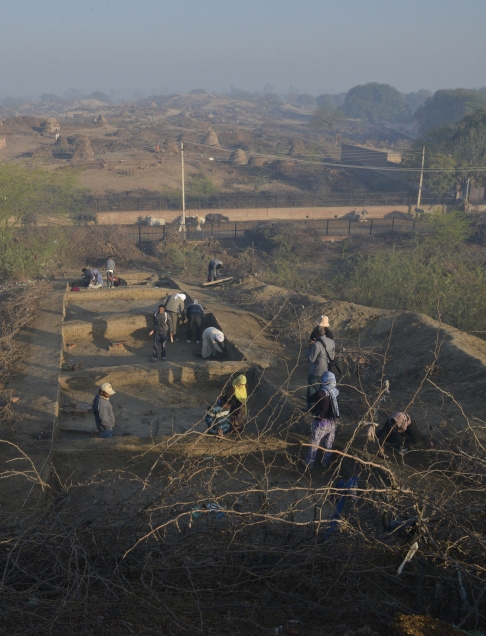
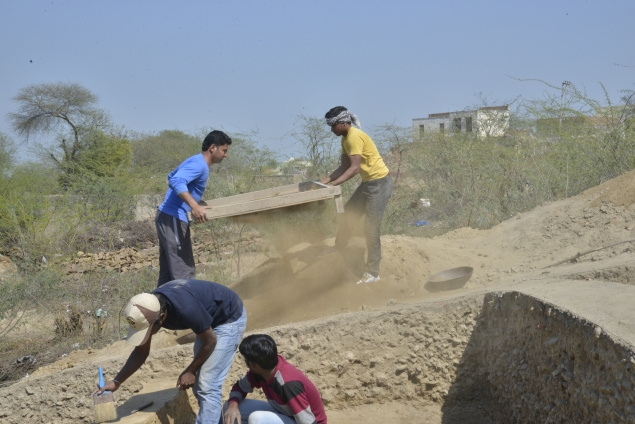
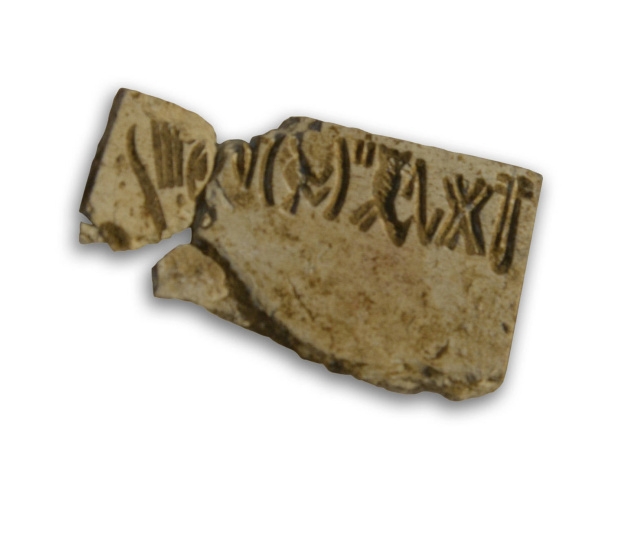
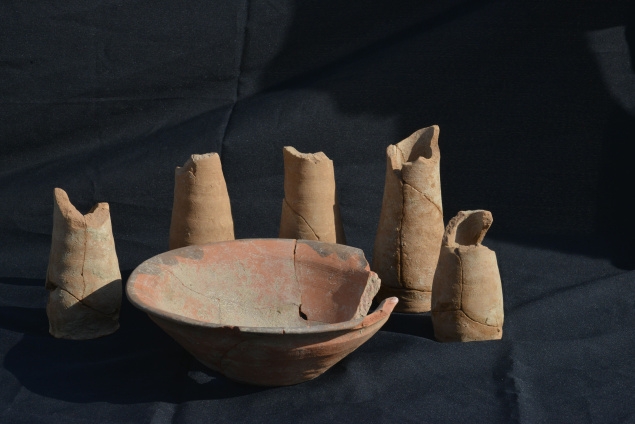
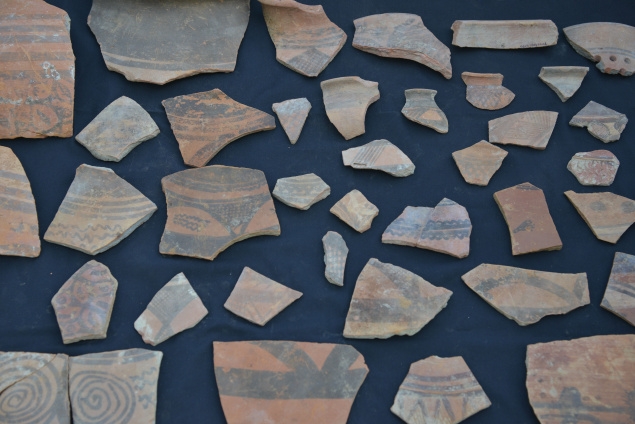

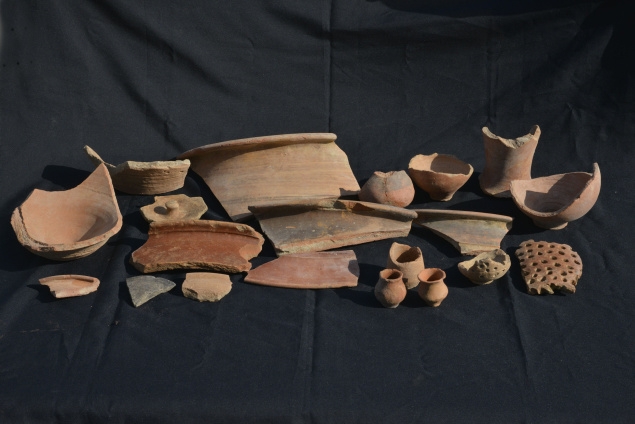













Highly informative and important excavations.
Very interesting, educative and full of hitherto unknown facts and figures.
Very pleased to read and know new discoveries being made. Must do more to dig into our history.
Very interesting.